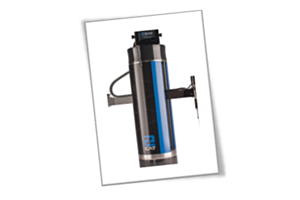ZCAT

Precursor
A CMM is a coordinate measuring device. It measures the geometry of a physical object through the use of a probe to sense discrete points on its surface. It is commonly used during manufacturing and assembly processes to test a part of an assembly before committing to the implementation phase, which is always a wise idea. Point clouds are developed and analyzed using regression algorithms for the construction of the features. Should there be a lack of an operator, DCC or direct computer control comes into play. Potentially the best thing about a DCC CMM is that it can be programmed to keep measuring identical parts, making it a sort of an automated industrial robot. The main downside about DCC CMMs is that they are usually benchtops, limiting the freedom of movement in the workplace.
Overview
When it comes to the zCAT, no mounting is needed as it is portable, unlike its benchtop counterparts. It does not have a heavy cast iron structure. It is made of stainless steel and only weights about 12.5 kg. There is no air requirement and so no special ventilation is needed. Ventilation equipment requires money and takes up space. It has a 4-axis arm with a cylindrical shape as opposed to a mere bridge. As for manual measurement, the operator grabs the touch trigger probe (Renishaw TP20) and moves it to the desired point, which is very helpful for programming and much easier to use than a joystick. Joystick technology is in this field is rather outdated by now.
The upgrade option is quite extensive. Provided is a free ControlCAT update. Additionally, clients can buy an MK4 3D software to upgrade to full-featured metrology along with lifetime free updates. As for the connection, both ethernet and WiFi are viable. Enjoy using this product for 3-4 hours on one battery, with an average consumption of 10-15 W. Do not worry about the temperature as there are onboard monitoring and compensation, conveniently provided for your smoothest experience using this sophisticated yet straightforward device.
Software
About the software which was briefly covered, ControlCAT and I++ steal the show. They pertain to metrology and servers respectively. ControlCAT is a geometric measurement tool that is very easy to use while efficiently delivering quality results. It measures manually or through DCC. The constructions that it creates are most commonly for the following geometrics: angle, circle, cloud, cone, cylinder, line, plane, point, reference, slot, and sphere. It remembers the geometry to automate repetitive measurements and make the overall process easier. Additionally, it conveniently transfers information to Excel spreadsheets that are easily accessible and readable.
For those looking for some advanced 3D capabilities, the I++ server software includes an optional MK4 3D software. Included are automatic measurement, an interactive graphics window, 2D and 3D inspection, DXF data import, feature construction, GD&T reports for engineering drawings, pass/fail reports, SPC in real time, exporting to DXF, and teaching and learning programming. It is quite the inclusive package.




